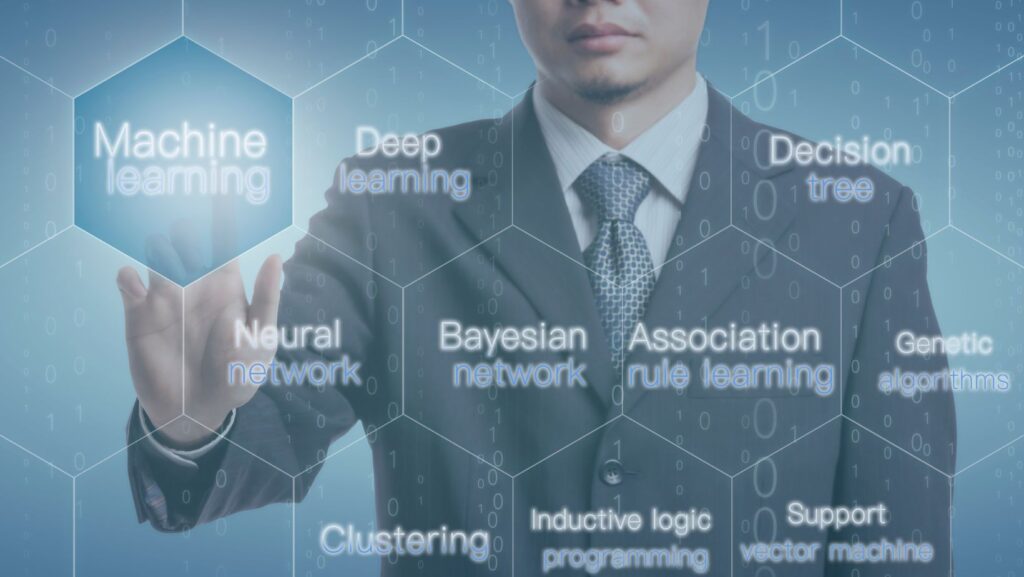
What is machine learning? ML is a branch of Artificial Intelligence that gives computers the capacity to autonomously acquire knowledge from information and previous interactions while observing patterns to generate predictions with minimum human involvement. Computers may now function independently without explicitly written code, thanks to ML techniques. Apps that use ML receive new data and are capable of growing, developing, and adapting on their own. Furthermore, ML is classified into reinforcement, unsupervised, and supervised learning. This article discusses the 3 ML types and establishes their advantages.
Supervised Learning
Supervised learning is considered to be among the most fundamental forms of ML. It involves the ML algorithm learning from data that has been labeled. Although precise labeling of the data is required for this approach to function, this machine learning type is very effective when employed appropriately. Supervised learning involves providing an ML algorithm with a limited dataset from which to learn. This training dataset, which makes up a smaller portion of the overall dataset, gives the algorithm a general understanding of the issue at hand, the proposed remedy, and the relevant data points. The training dataset has comparable properties to the final dataset and gives labeled parameters to the algorithm to accomplish the task.
In essence, the algorithm establishes a causal link between the dataset’s variables by looking for correlations between the parameters that have been provided. After training, the algorithm has a general understanding of the operation of the data and the link between output and input. The final dataset is subsequently utilized to test this solution, and it learns from it just as it learned from the training dataset. This implies that supervised ML algorithms will keep getting better even after being put into use, understanding new correlations and trends as it trains on newly acquired information. There are two supervised learning techniques:
Classification
These algorithms solve classification issues using categorical output variables, such as male or female, true or false, yes or no, and so on. Filtering emails and detecting spam are concrete examples of how this category is used in the real world. Among the top classification algorithms are the Support Vector Machine Algorithm, the Logistic Regression Algorithm, the Decision Tree Algorithm, and the Random Forest Algorithm.
Regression
Regression algorithms solve regression issues when the connection between the output and input variables is linear. These have a reputation for forecasting continuous output variables. Real-world examples consist of market trend analysis and weather forecasting. Regression algorithms that are widely used encompass Lasso Regression, Decision Tree Algorithm, Multivariate Regression Algorithm, and the Simple Linear Regression Algorithm.
Advantages of Supervised Machine Learning
● You can easily comprehend the process of supervised learning. Unsupervised learning makes it difficult for people to understand the inner workings of the computer, how it learns, etc.
● You may determine the precise number of classes before supplying the training data.
● You have the option to define the classes precisely. In other words, you may train the classifier in such a manner that it has an ideal decision boundary that properly distinguishes between various classes.

● Maintaining the training data in your memory is unnecessary once the full training is finished. You may continue to use the decision boundary’s mathematical formula as an alternative.
● Classification issues may benefit significantly from supervised learning.
● Predicting a numerical target value from provided labels and data is a common application of supervised machine learning.
Unsupervised Learning
Unsupervised learning is a method of learning that doesn’t require supervision. In this case, the machine undergoes training using a dataset that is unlabeled and has the ability to figure out the output independently. An algorithm employing unsupervised learning aims to categorize the unsorted dataset according to the patterns, distinctions, and similarities in the input. Take, for instance, an input dataset of pictures of a container with fruit in it. The ML model, in this case, is unfamiliar with the photos. The ML model’s job is to classify the objects by identifying patterns in their appearance, such as variations in shape, color, etc., when given a dataset. Following classification, the machine anticipates the output while being evaluated against a test dataset. The categories for unsupervised machine learning are:
Clustering
This approach involves classifying things according to criteria like commonalities or contrasts between objects. For instance, putting clients into groups based on the goods they buy. A few widely recognized clustering methods are Independent Component Analysis, Principal Component Analysis, DBSCAN Algorithm, Mean-Shift Algorithm, and the K-Means Clustering Algorithm.
Association
Learning by association involves spotting common connections between a large dataset’s variables. It maps related variables and establishes the interdependence of various data items. The typical applications of association learning consist of market data analysis and web usage mining. Notable association-compliant algorithms are the FP-Growth Algorithm, Eclat Algorithm, and Apriori Algorithm.
On the other hand, it’s worth noting that developing code for unsupervised learning algorithms is a challenging endeavor. On such occasions, it would be best to seek machine learning homework help from professionals. The latter can write high-quality code for different types of machine learning from scratch to meet your professional and academic requirements.
Unsupervised Learning’s Advantages
● This type of machine learning is able to perceive things that the human mind can’t.
● It offers numerous real-time applications and is utilized to uncover hidden patterns crucial to the industry.

● The result of an unsupervised undertaking might result in the creation of a whole new company segment or endeavor.
● The task is less complicated than the one requiring supervised learning. There are fewer complications since no one must interpret the labels in this case.
● It’s relatively easy to gather unlabeled data.
Reinforcement Learning
Reinforcement learning is a procedure that relies on feedback. In this case, the AI component autonomously observes its environment using the hit-and-trial approach, acts, gains knowledge from encounters, and enhances performance. The component gets a reward for each correct activity and a penalty for each incorrect action. Therefore, the reinforcement learning component’s goal is to maximize rewards via functioning successfully. In contrast to supervised learning, reinforcement learning doesn’t employ labeled data. Instead, the agents solely learn from what they have experienced. Take video games, for example. In this instance, the reinforcement agent’s actions establish its state while the game predetermines the environment. The agent gets feedback in the form of rewards and penalties, influencing the game’s overall score. The agent’s primary objective is to get the highest possible rating. Applications of reinforcement learning may be found in a variety of fields, including multi-agent systems, information theory, and game theory. The algorithms or approaches used in reinforcement learning are:
Positive Reinforcement Learning
This example of reinforcement learning involves providing a reinforcer once an agent exhibits a certain behavior, increasing the likelihood that the action will recur. An example of this would be incorporating a reward. A real-world instance includes teaching vehicles to park and operate on their own.
Negative Reinforcement Learning
This approach involves reinforcing a specific action in order to prevent an undesirable outcome. For example, using dynamic traffic light control to minimize gridlock.
The Advantages of Reinforcement Learning
● Reinforcement learning may tackle complicated issues that conventional methods cannot handle.
● This approach is ideal for obtaining long-term outcomes, which are incredibly challenging.
● This method of learning is quite akin to how humans learn. As a result, the learning model is almost flawless.
● After a model has fixed a mistake, there’s a very low likelihood of it happening again.
● It will inevitably draw lessons from its experience even without a training dataset.
● Reinforcement learning models are capable of outperforming humans in a variety of activities. For example, in March 2016, the Go titleholder Lee Sedol was defeated by DeepMind’s AlphaGo software, which utilized a reinforcement learning model.
● Reinforcement learning systems establish a balance between exploitation and exploration. Exploitation is doing what has historically produced the most favorable results. Other machine learning types can’t achieve this equilibrium. Besides, exploration involves testing novel techniques to determine whether they’re superior to what has already been explored.
Succeeding in Machine Learning Starts with Understanding How Each Type Works
ML has emerged among the most revolutionary technological developments in the last ten years. It is helping organizations to accelerate their digital transformation and enter the modern era of automation in the fiercely competitive business sector. Equally, ML is revolutionizing education and significantly altering research, teaching, and learning. Accordingly, it would be best to utilize the information this article has highlighted to understand the three types of machine learning, some real-world applications of ML, and the advantages of using ML.












